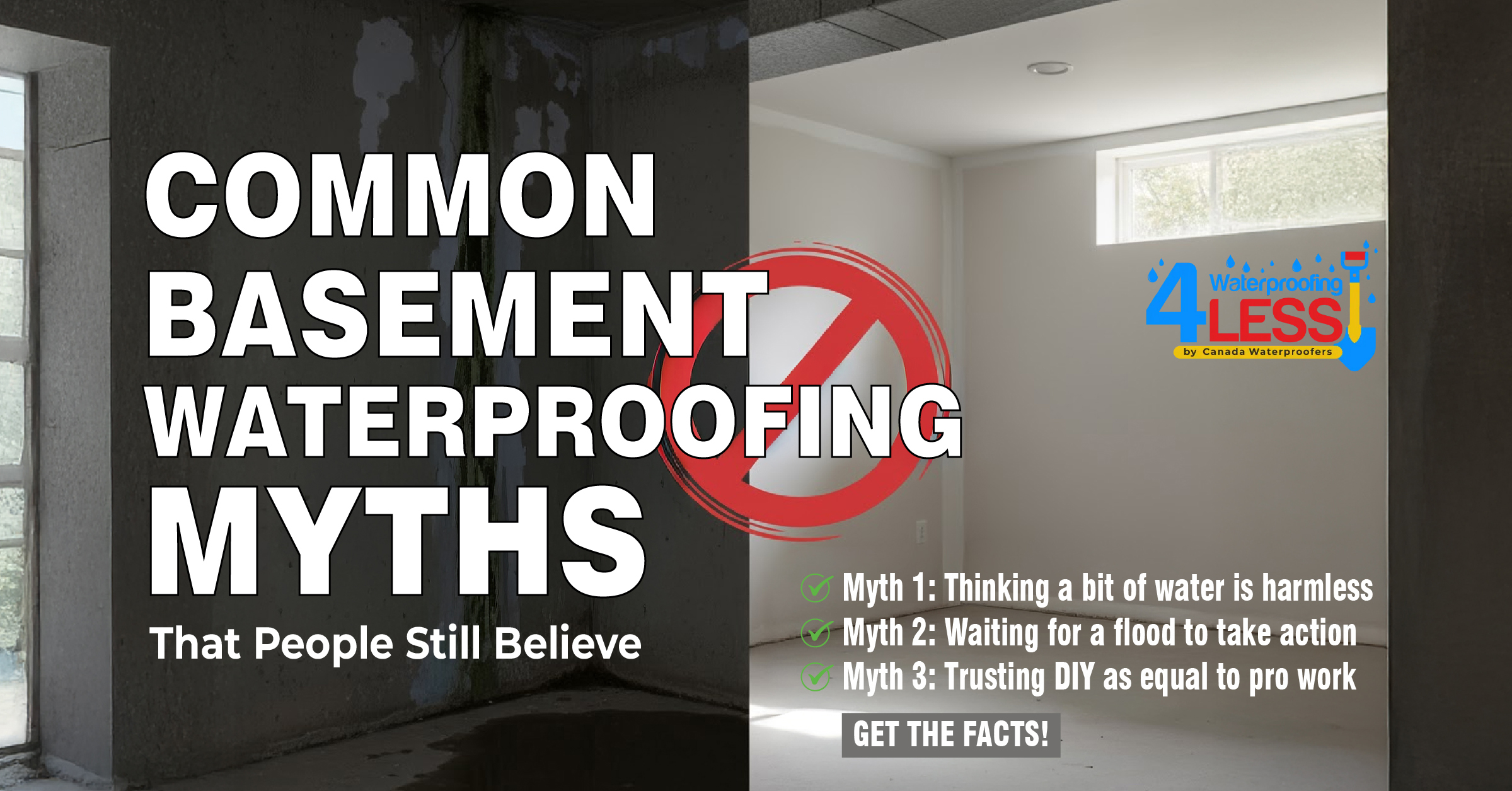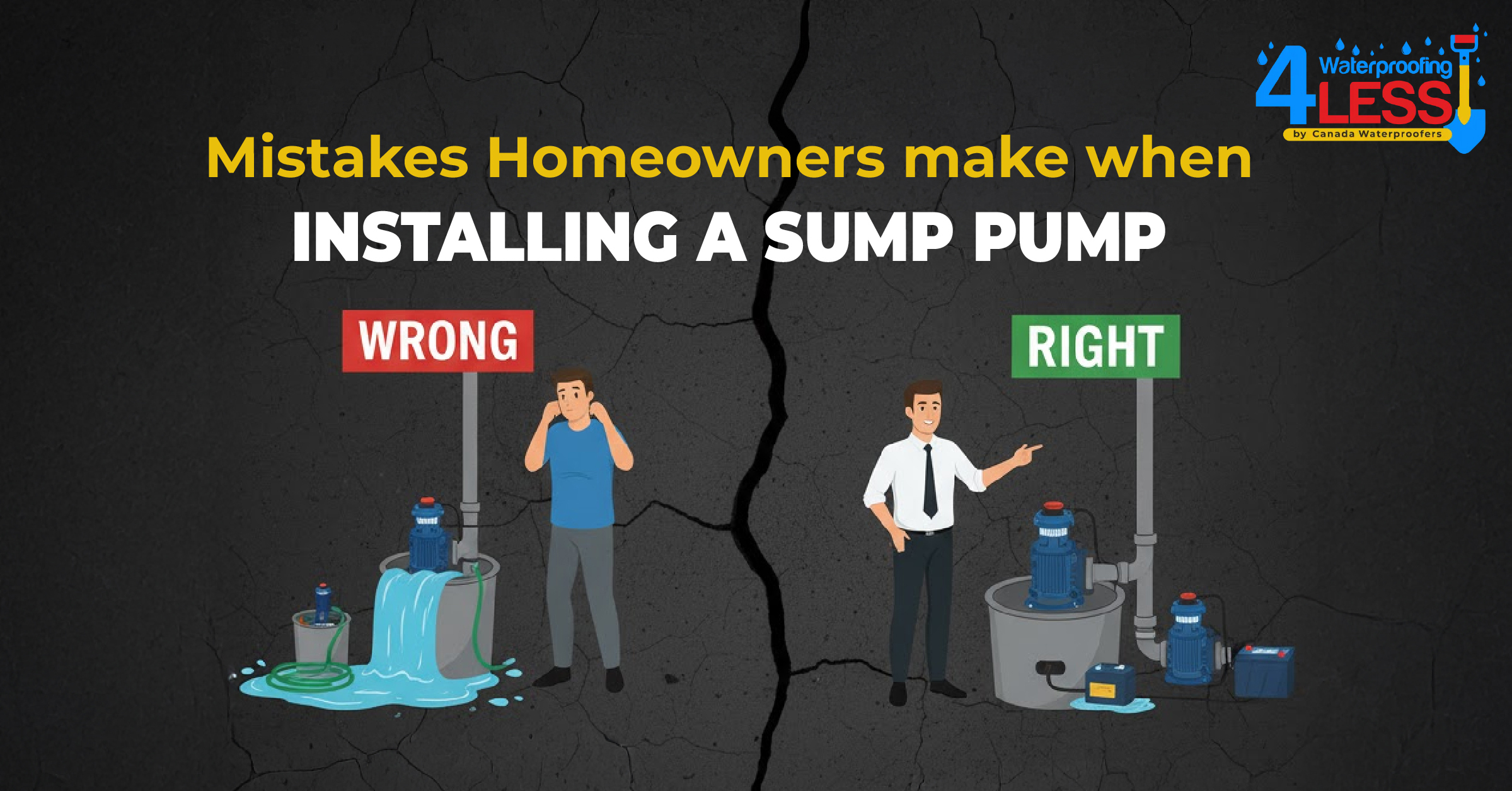Ever walked into your basement or you have spotted a crack on the wall? First reaction panic. But here’s the truth: not every crack means trouble. Some are just part of how a house ages. Others? Yeah, they need a closer look.
If you can tell which is which, you’ll know when to chill and when to call in a professional basement waterproofing.
Why Do Basement Wall Cracks Even Happen?
Cracks don’t just show up for fun. There’s always a reason hiding behind them. Sometimes the house simply settles. Other times, the ground outside swells with water and pushes against the wall. Concrete itself shrinks a bit as it dries. Weather plays its part too—hot, cold, hot again… the wall expands and contracts. Add weak drainage or sloppy construction, and you’ve got a recipe for cracks.
Some are harmless. Some slowly get worse. Spotting them early makes a big difference. A good basement waterproofing system and proper drain repair and replacement can reduce the pressure that causes many of these issues.
Hairline Cracks
These are the pencil-thin ones you almost miss the first time. Usually vertical or slightly diagonal. They show up in newer homes a lot, just from concrete drying out.
They don’t usually leak. They don’t scream “foundation problem.”
Draw a tiny mark at the ends. Check again in a few months. If it hasn’t moved, leave it alone.
Vertical Cracks
Up-and-down lines on the wall. Pretty common. Most of the time, it’s just the house settling. You’ll often find them near corners or around windows. If they’re narrow and dry, they’re not dangerous.
Seal them up with hydraulic cement or crack injection to keep water out. If needed, a quick sump pump installation can help divert water and prevent moisture build-up.
Horizontal Cracks
Now this one matters. A horizontal line running across the wall usually means water pressure outside is pushing in. Over time, the wall can even start bowing in the middle.
Look for these signs:
- A straight horizontal crack stretching across
- The wall curving inward a little
- Moisture or leaking after rain
This is a “don’t wait” situation. Contact our foundation specialists to check it out. This is the type of issue that leads to structural damage if ignored.
Diagonal Cracks
These start at the top corner of a wall and angle down. Why? Usually one side of the house is settling faster than the other, or the soil on one side is pushing harder.
If it’s small and not changing—fine. But if it starts widening, or if water finds its way in, it’s inspection time. Basement waterproofing in Toronto or nearby areas like Mississauga and Oakville can help protect against future movement.
Step Cracks (Block Walls)
Got block walls instead of poured concrete? Then you might notice cracks that zigzag along the mortar lines, like stairs.
This is called a step crack. It usually means movement either the soil outside is shifting or the foundation itself is moving a bit.
They can look harmless at first, but if they grow, they need attention.
Quick Guide to Common Foundation Cracks
- Hairline Cracks
- Cause: Shrinking concrete as it cures
- Severity: Low
- What to Do: Just monitor it no immediate action needed unless it grows or spreads.
- Vertical Cracks
- Cause: Normal settling of the foundation
- Severity: Low to Medium
- What to Do: Seal it to prevent moisture entry, and keep an eye on it over time.
- Horizontal Cracks
- Cause: External water pressure pushing against basement walls
- Severity: High
- What to Do: Call a professional this type of crack often signals serious structural stress.
- Diagonal Cracks
- Cause: Uneven settling or shifting pressure
- Severity: Medium to High
- What to Do: Monitor closely. If it grows or widens, repairs may be needed.
- Step Cracks (Along Mortar Joints)
- Cause: Foundation movement, especially in brick or block walls
- Severity: Medium to High
- What to Do: Get a pro to inspect it could be early signs of major shifting.
A Simple Routine to Keep Track
Here’s an easy way to stay on top of things:
- Take a slow walk and find all visible cracks
- Mark the edges with a pencil
- Measure the width with a simple ruler
- Notice the direction vertical, horizontal, diagonal, or step
- Check if there’s any moisture
- Recheck in a few months
- If it grows or leaks, don’t guess call an expert
Takes a few minutes but saves you a lot of stress.
When to Take It Seriously
Some cracks are just part of a house’s life. Others are red flags. Pay attention if:
- You see horizontal cracks and the wall’s pushing inward
- The gap keeps getting wider
- Rain causes leaks through the crack
- Doors are sticking or floors feel uneven
- Step cracks are spreading quickly
That’s your cue to get someone in. Early repair is cheaper than foundation surgery later.
A Few Smart Prevention Habits
You can’t stop your house from settling, but you can keep the pressure off your walls:
- Keep gutters clean
- Make sure the soil slopes away from the house
- Add or maintain a sump pump system
- Fix plumbing leaks fast
- Don’t let water collect around the foundation
Good drainage = fewer problems. You can even check the Toronto waterproofing calculator to estimate costs for upgrades.
Final Thoughts
Not every basement wall crack is a reason to lose sleep. Some just happen. Others warn you that the foundation is under pressure. Knowing the difference between hairline, vertical, horizontal, diagonal, and step cracks helps you act at the right time.
If a crack looks suspicious, don’t overthink get a pro to take a look. A small fix now beats a big repair later.




.png)




